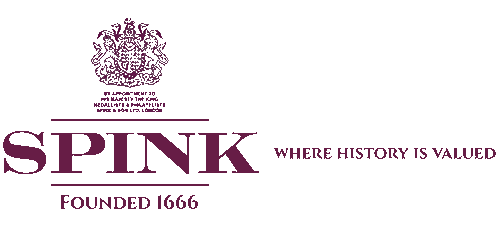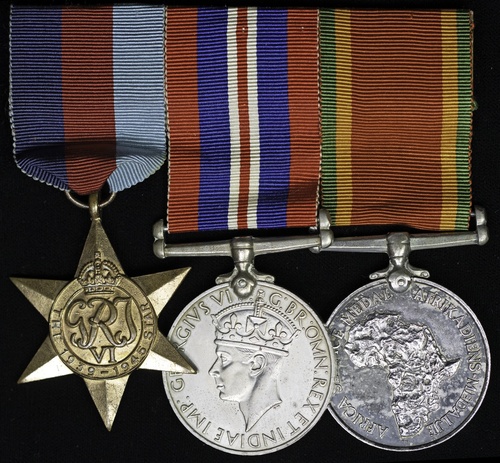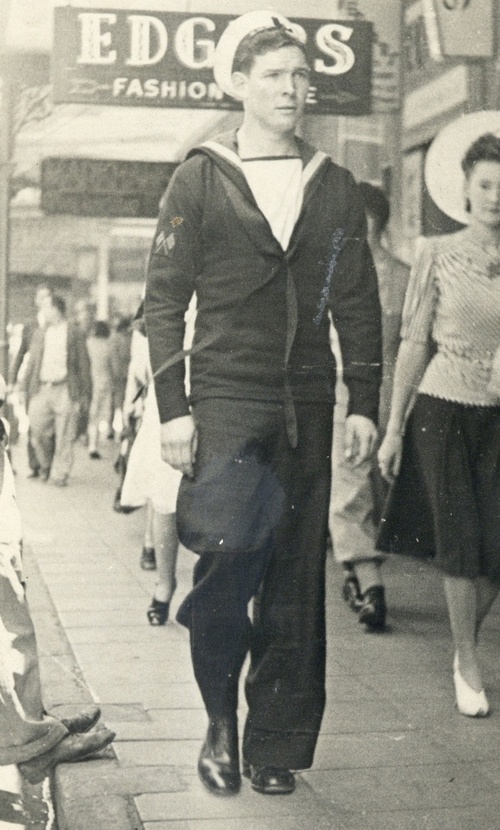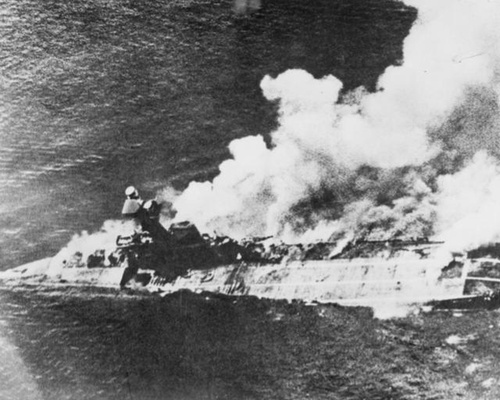Auction: 24113 - Orders, Decorations and Medals - e-Auction
Lot: 562
(x) Three: Signalman J. D. D. Perring, South African Division, Royal Naval Volunteer Reserve, who survived the sinking of the aircraft carrier H.M.S. Hermes on 9 April 1942
1939-45 Star (69099 J. D. D. Perring); War Medal 1939-45 (69099 J. D .D. Perring); Africa Service Medal 1939-45 (69099 J. D. D. Perring), mounted as worn, light contact marks, very fine (3)
John Dewar Deeble Perring was born in Johannesburg, South Africa on 14 September 1923 and was educated at King Edward School, Johannesburg and St Andrew's College, Bloemfontein. He left school before matriculating and joined the Royal Naval Volunteer Reserve (South Africa) on 1 July 1941 at age seventeen and carried out his basic training in Simonstown naval base. He was rated Ordinary Signalman in the Seaward Defence section of South Africa's defence force.
On 30 January 1942 Perring was drafted to HMS Hermes, the world's first ship to be designed and built as an aircraft carrier. She was laid down in January 1918 and launched on 11 September 1919, she was however not commissioned until 18 February 1924. She spent much of her service in the 1920s and '30s deployed with the China Fleet; in 1937 she was assigned to the Reserve Fleet but only a year later in July 1938 became a training ship at Devonport.
Upon the outbreak of World War II, Hermes conducted anti-submarine patrols in the western approaches. She was deployed to Dakar in October to co-operate with the French Navy in hunting down German commerce raiders and blockade runners. She remained in this area until the establishment of the Vichy regime in June 1940. The authorities in French West Africa supported Vichy, and Hermes, supported by several cruisers, then blockaded Dakar and made an unsuccessful attack on the battleship Richelieu. In February 1941 the carrier supported Commonwealth forces in Italian Somaliland during the East African campaign and did much the same two months later when the British intervened in Iraq. After that campaign, Hermes spent most of the rest of the year patrolling the Indian Ocean. She refitted in South Africa between November 1941 and February 1942 and a number of South African personnel, including Perring, joined her company.
Perring was with her off the coast of Celyon, near Batticaloa, on 9 April 1942 when Japanese dive-bombers launched an attack just after 10:30 am. Hermes was hit by at least forty 250-lb bombs which penetrated the unarmoured flight deck to burst inside the ship. After less than quarter of an hour she was blazing from stem to stern and listing heavily to port. She sank with the loss of 306 of her ship's company, including Captain R.F.J. Onslow M.V.O., D.S.C., and seventeen South African sailors. One pilot recalled:
"Hit after hit wracked the two enemy warships, and more often than not flames and smoke rather than the slender plumes of near misses billowed upwards. Our bombers were literally unopposed and swarmed furiously over the warships. Commander Egusa's men once again achieved an incredible percentage of direct bomb hits … Within ten minutes of the first bomb drop, the Hermes was a gutted, flaming hull, its deck ripped to splinters, its sides shattered by bomb explosions. Five minutes later, only fifteen minutes after the first dive-bomber dropped from the sky, the Hermes slipped beneath the waves. The Vampire was already gone, literally torn into great pieces of wreckage."
Hundreds of men were left in the sea. Some found a place on a raft, others grasped floating wreckage or were supported by life-jackets. Many recalled their intense emotion as they looked back for a last view of the ship before she vanished under the sea. Some suffered from wounds and burns, others suffered internal injuries caused by the shock wave of bombs exploding in the sea. Many of these died before they could be rescued. The survivors were relieved to find that on this occasion they were not machine-gunned in the water. Nearly all suffered from being coated with a thick layer of oil which got into their eyes, mouths and wounds. The sea was fairly warm and there were no shark attacks but several men observed sea-snakes. The ship had sunk within sight of land and a few men attempted to swim to shore. The survivors were in the water for five or six hours before the hospital ship Vita rescued them - this was long enough for some to suffer severe burns from the tropical sun.
The Vita landed them in Ceylon next day. There were 590 survivors, including John Perring. As he was abandoning ship he received a shower of shrapnel across his back and shoulders. Oil got into these wounds and he was admitted to hospital in Colombo. These wounds troubled him for years afterwards and he carried the scars for the rest of his life.
Perring was later discharged from the Navy in December 1945. On his return to civilian life he took a job working underground in the mines, hoping that the heat and resulting perspiration would sweat the poisons out of his body. In this way he acquired experience of drilling methods and equipment such as drill bits and abrasive tips and was employed for some thirty-five years with large companies like Delfos and Atlas Copco. He worked first as a company representative, later he provided training and consultation services. He travelled extensively in the course of his work, covering the whole of southern Africa: South Africa itself, also Northern and Southern Rhodesia and South West Africa (Namibia), and was also employed in England for several years. Perring enjoyed baseball and golf. He was also a keen fisherman, fishing from the rocks along the coast. In May 1988 Rex Morgan presented him a copy of his book The Hermes Adventure with a personal inscription. On 17 October 1990 he died in Cape Town; sold together with binder of copied research, also including an original photograph.
ReferenceS:
Rex Morgan, The Hermes Adventure, Runciman Press, 1985
Stanley B. Curtis, "The Loss of HMS Hermes", The Review (Journal of the Naval Historical Collectors & Research Association) Vol. 12.1, summer 1999.
Subject to 5% tax on Hammer Price in addition to 20% VAT on Buyer’s Premium.
Sold for
£110
Starting price
£110









